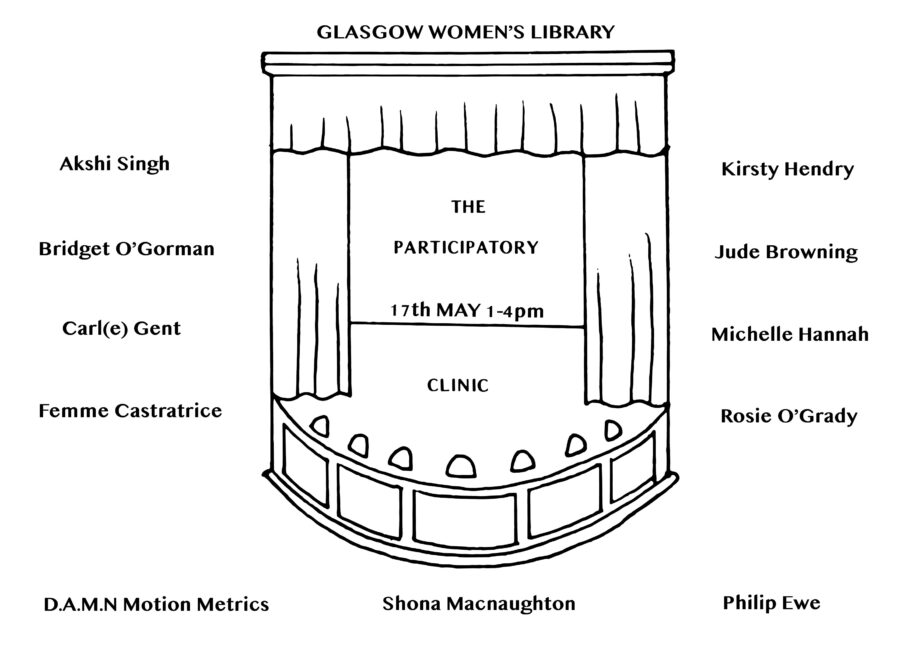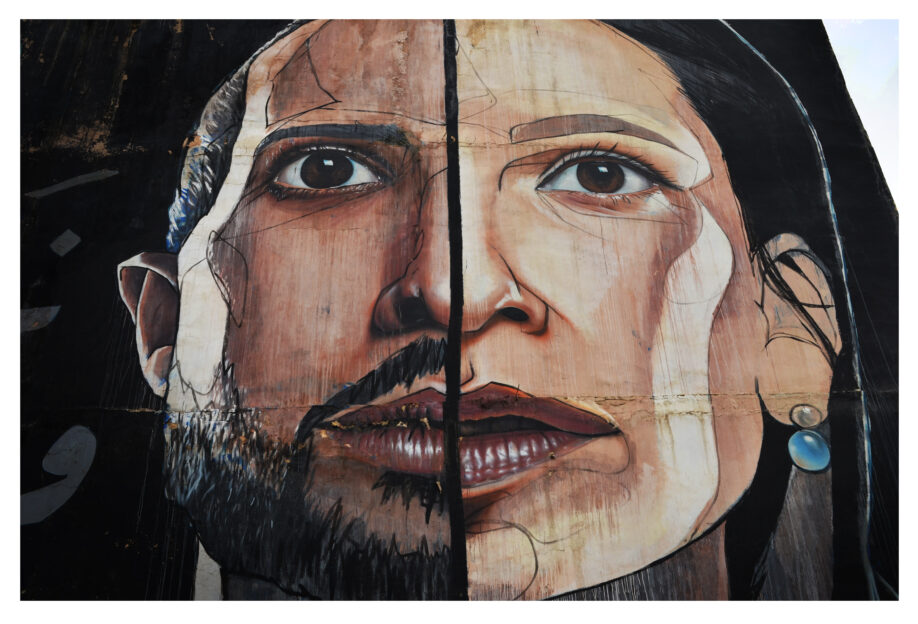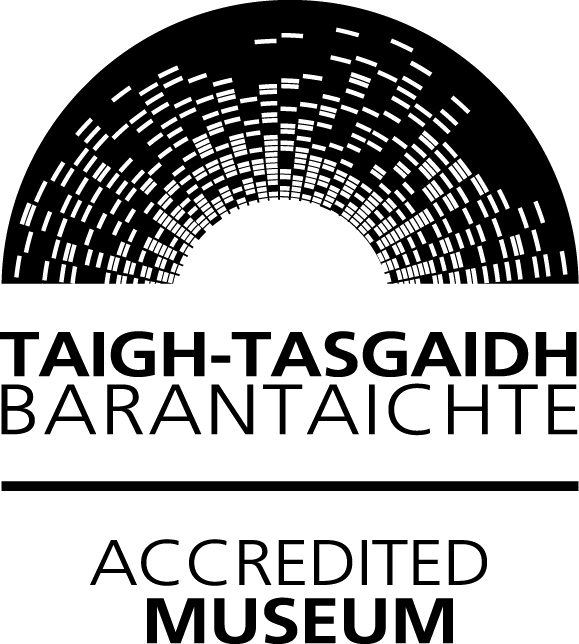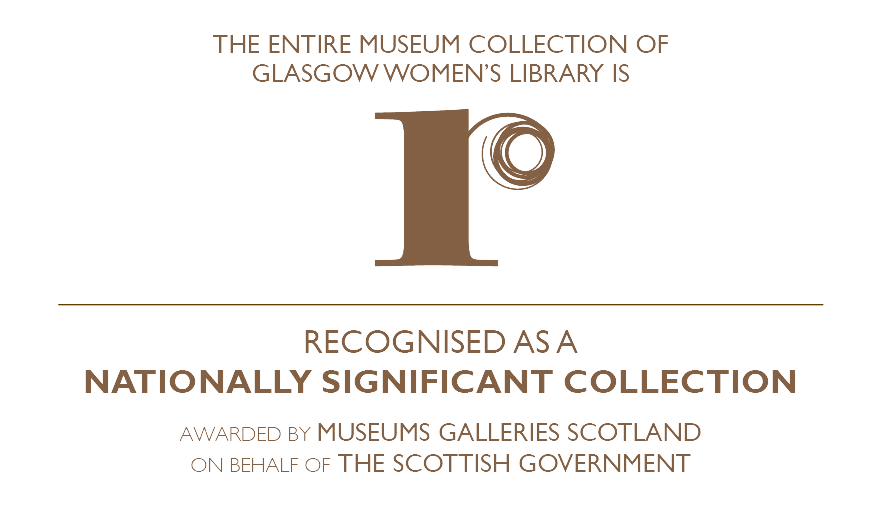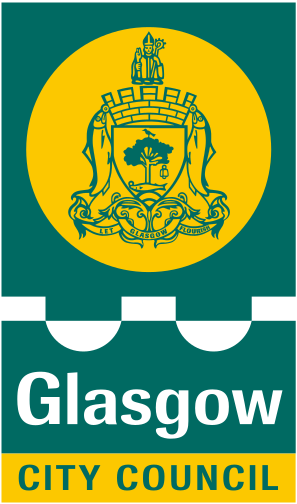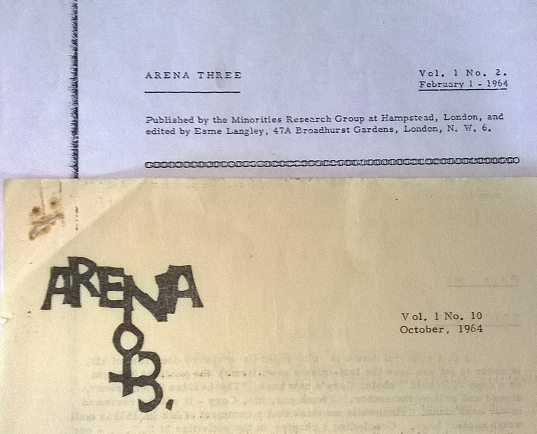
Here we go to my third post! In this blog I am going to compare Arena Three’s editorial structure and aims with those of Urania (So, do no worry if you already miss that magazine!).
Do you remember Urania’s promotion of peace and elimination of gender?1 Well, Arena Three comes out in the Sixties, the Second World War smashed feelings of hope and spiritual love endorsed by Urania; in this new time, standing up for sexual identity rights is a need and a political weapon2.
Arena Three, published from 1963 to 1972 in London, can be clearly defined as a sapphic magazine. The strong feminist and pacifist beliefs that underlay Urania have been replaced in Arena Three by an equally strong desire for lesbian visibility and representation. Women who love women always existed, showing this historical truth is also the aim of the journal, as can be seen for instance in the columns ‘Katherine Mansfield’ (March-April 1964) and ‘Paperback Notes’ (July 1967, pp. 5-8)3.
So, if Urania’s goal was the abolition of gender in order to build a society of equal angels whose sex and erotic orientation were not important; Arena Three argues instead for a lesbian identity4.
The structure of this journal is not dissimilar to Urania. During the first two years of printing we see 12/14 pages and articles that foster equality and acceptance. Like Urania, Arena Three is ‘a private circulation magazine to all who endorse or claim to endorse its aims’ (July 1967, p.1): ‘voicing the Lesbian’s point of view and serving as a bridge between the homosexual woman and the (officially) heterosexual public’ (ibidem).
It is in October 1964 when the journal starts to alter its face. The number of pages will remain the same but the cover is renewed: new title graphic and colour; Rainbow is the new black. The contents of the magazine are not hugely changed but it seeks to develop the bond with the readership5 and other homophile organizations like the American The Ladder; the creation of a lesbian network is pursued. A year later Arena Three changes dress again, drawings appear on the cover and a smaller format (A5) takes the place of the old one: creativity is the key word.
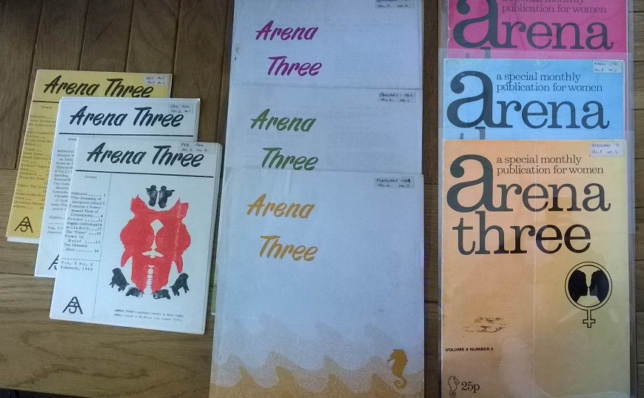
The editors reach fever pitch drawing on readership suggestions to renew the cover and the format (July 1967): an A4 format where the protagonist of the cover is a sea horse swimming through the waves, waves that change colour every month. The focus of this new edition is on giving more space to readers; they can now use the new column ‘Free Speech’ to discuss their personal experiences as lesbians debating pros and cons. The last revision takes place in November 1970. After the 1969 Stonewall riots and the emergence of second-wave feminism, Arena Three is even more out and proud and adds on the cover the subheading ‘a special monthly publication for women’. Furthermore, the magazine can now be purchased for 25 p by a wider readership6.

In my fourth and last blog I will look at the contents of Arena Three that I have found most intriguing and I will draw out some of the differences between Arena Three and the earlier Urania.
Further readings:
Koller, V. (2008) Lesbian Discourses: Images of a Community. New York: Routledge.
Are you dying to know more about lesbians in the Fifties and Sixties?
At the Glasgow Women’s Library, you can also find The Ladder in the marvellous Lesbian Archive and Lesbian Pulp Fiction by Katherine V. Forrest.
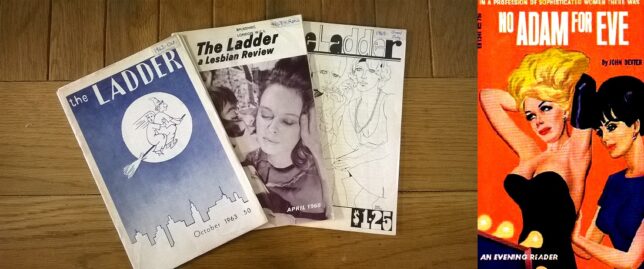
1) Urania (1926-1940) The promotion of peace and elimination of gender underlie the whole publication. Do you want to delve into the subject? Take a look at May/August 1926 and 1928 or September/December 1931 and January/April 1940.
2)The visibility of a lesbian identity and network allows to fight more concretely for rights.
3)In ‘Katherine Mansfield’ (March-April 1964) the authors inquire the roots and evidence of Mansfield’s homosexuality.
In ‘Paperback Notes’ (July 1967, pp. 5-8) Arena Three encourages the reading of lesbian and bisexual writers as Gertrude Stein, Colette and Radclyffe Hall.
4)A3 through its features wants to create and enhance a community of homosexual women who can also talk about their personal experience and desires.
5)Look for instance at the columns ‘Mailbag’ (1963-1972), ‘Free Speech’ (November 1968-1972) or ‘Putting Yourself on Paper (April 1970) that gave readership room for liberal expression.
6)As Koller reminds in her book (2008): ‘Arena Three was distributed by subscription, through women’s bookshops and benefit discos or even by street sale’ (p. 46).

